Innovative Root Textiles - Transforming Wheatgrass Roots Into Textured Fabrics
by amitsaha in Living > Decorating
1425 Views, 10 Favorites, 0 Comments
Innovative Root Textiles - Transforming Wheatgrass Roots Into Textured Fabrics

This project explores the development of textiles using wheatgrass roots, focusing on their potential to create sustainable and unique materials. By guiding the roots through bubblewraps, we aimed to impart distinct textures to the resulting fabric. The process involved growing and harvesting wheatgrass roots, followed by drying and preparing the roots to be used as textiles. This demonstration highlights the innovative approach to creating eco-friendly and versatile materials with future applications in apparel, lamp shades, and decorative items.
Supplies
- A Fresh Bowl
- Wheat seed
- Bubble Wrap
- Mosquito Net
- Thermocol cover/base
- Cocopeat
- Water spray
Seed Sowing








- Start with a clean bowl to work in.
- Take a small jar and pour wheat seeds in it.
- Fill the jar with water, wash, and strain 2 times.
- Let the seeds soak in the water.
- After soaking, use a cloth or fine sieve to filter out the water from the seeds.
- Place the seeds in a bowl or a sprouting tray to continue the sprouting process.
Placing Bubble Wrap



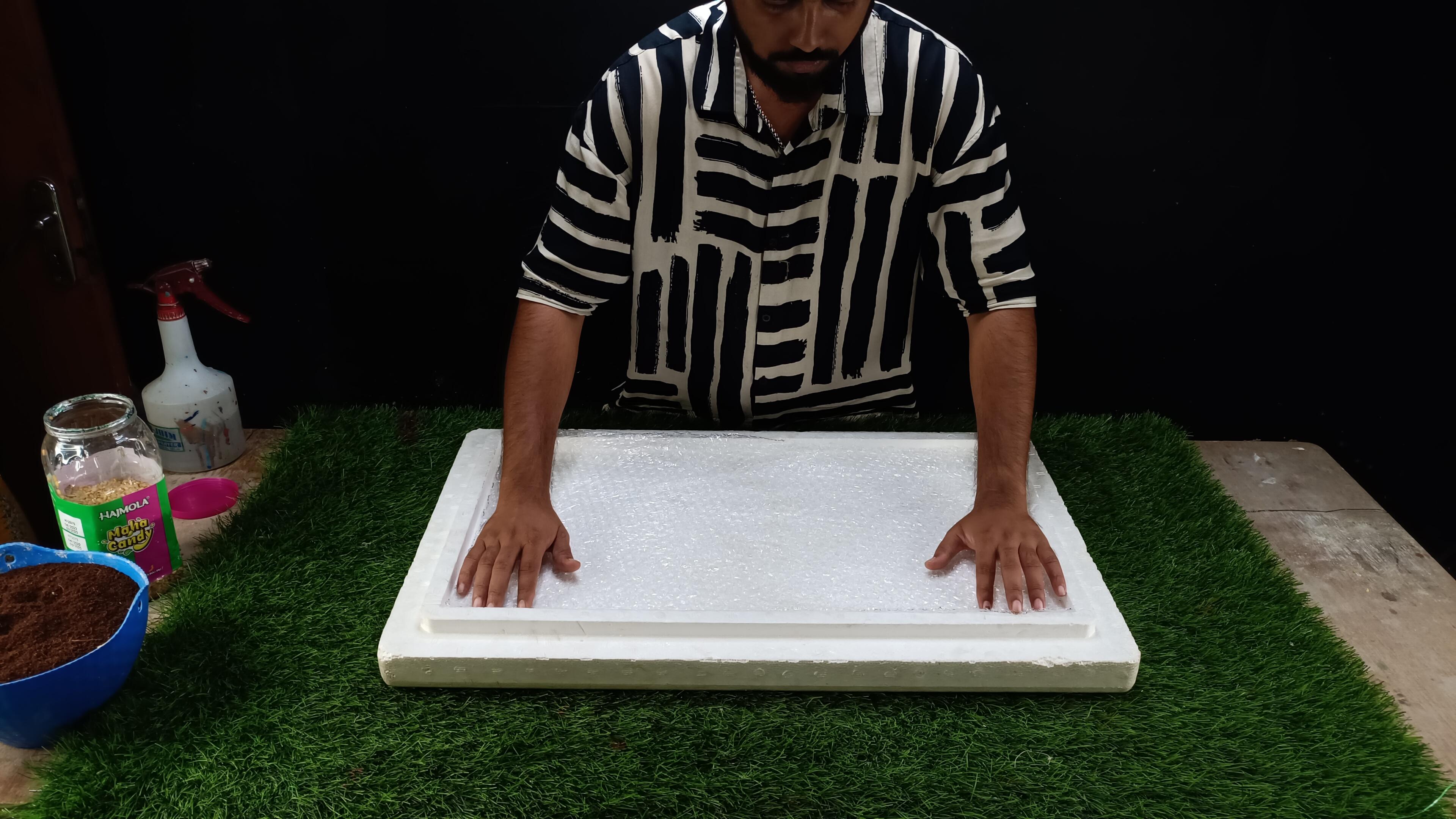

- Place the bubble wrap over a thermocol base.
- Measure and cut the bubble wrap to the appropriate desired size.
- Place the bubble wrap with the bubbles facing upwards.
- Use tape or a secure adhesive to keep the bubble wrap in place
Insert Mosquito Net





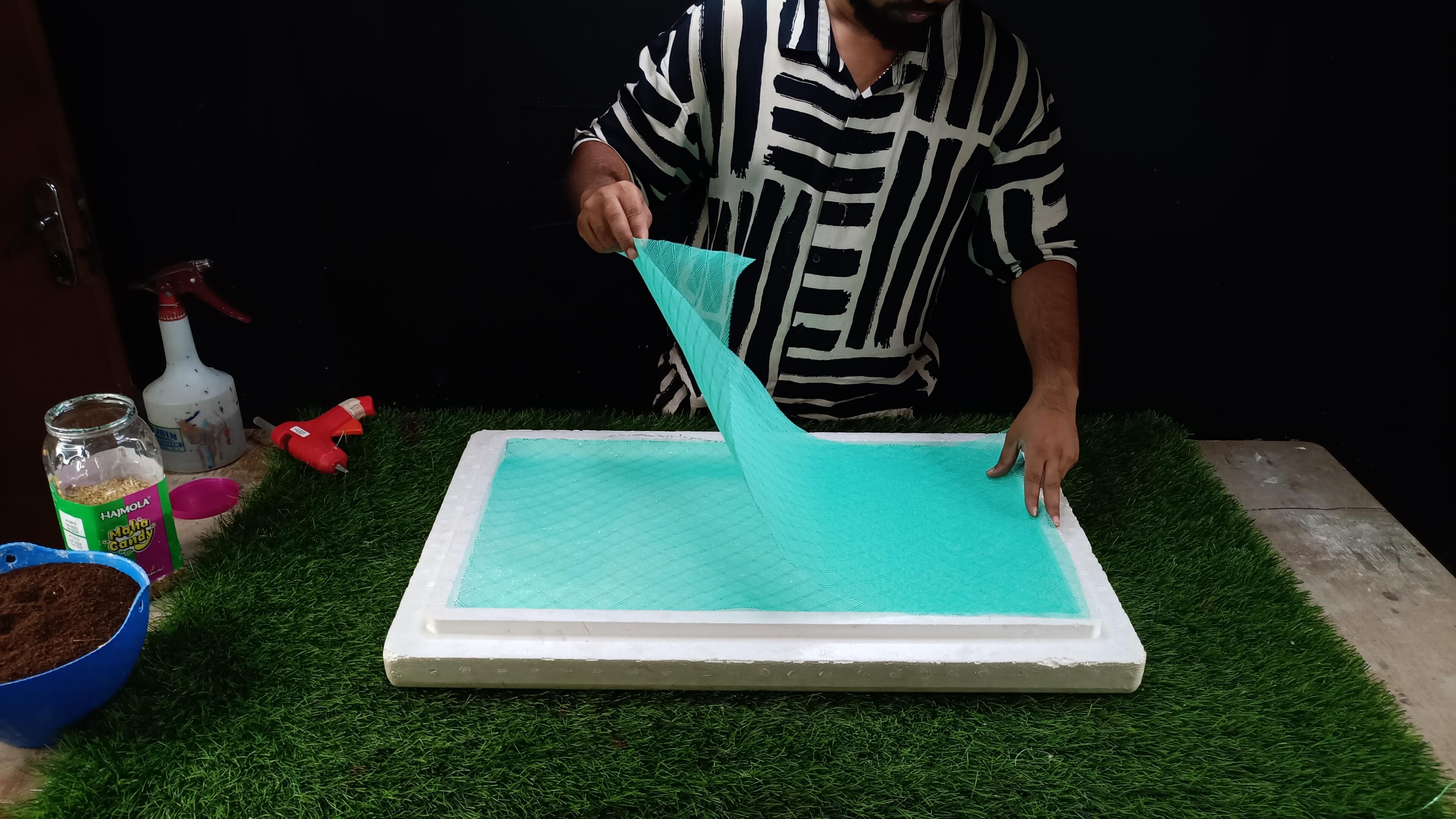


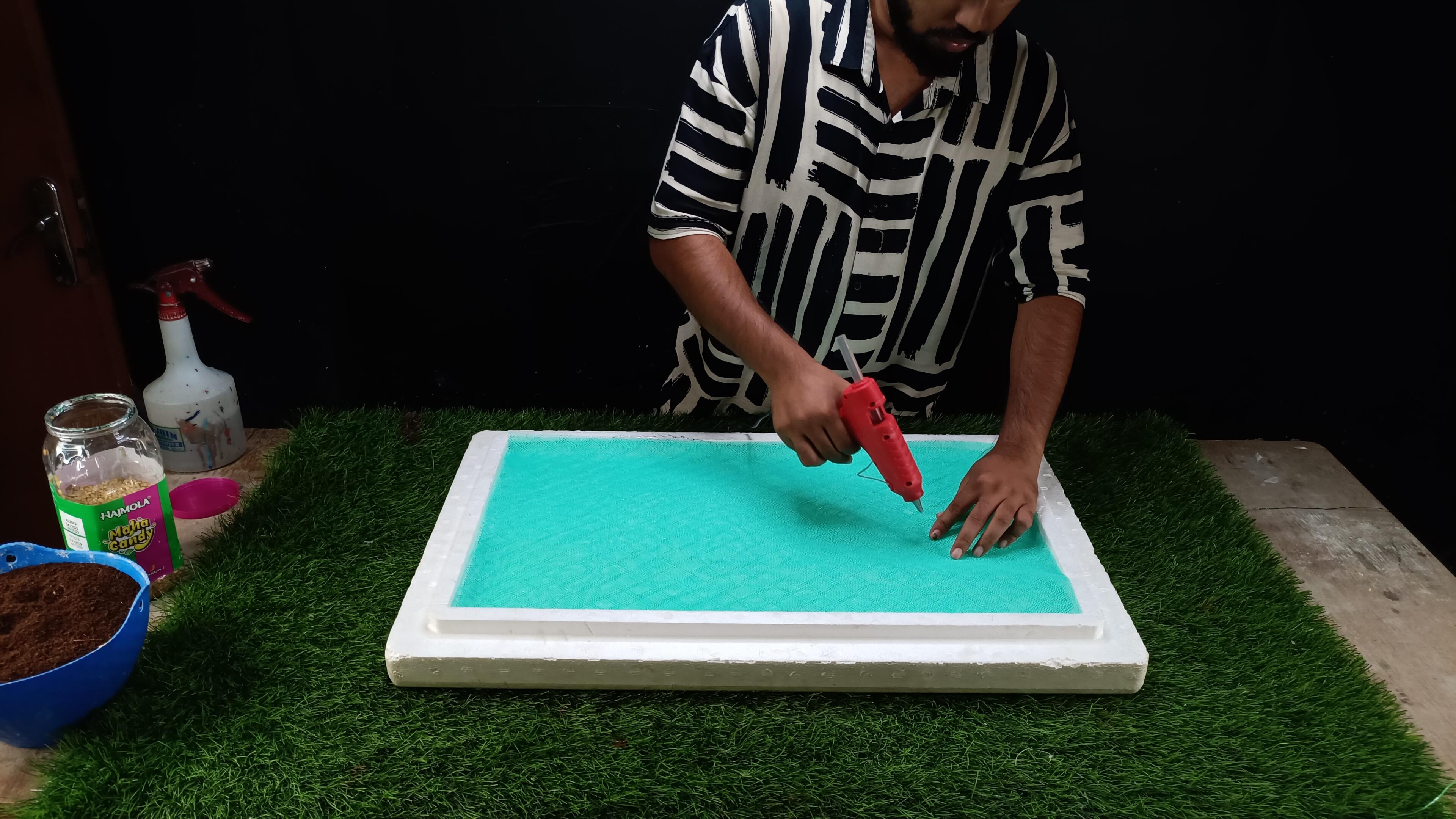

- Clean the surface or frame where the mosquito net will be inserted to ensure a proper fit.
- Measure and cut two mosquito nets to fit the area.
- Place the first mosquito net over the area, ensuring it covers the entire space.
- Position the second mosquito net over the first one, creating a dual layer of protection. This will part the greens and roots.
- Check that both nets are functioning effectively and remain in place.
Using Cocopeat and Wheat Together













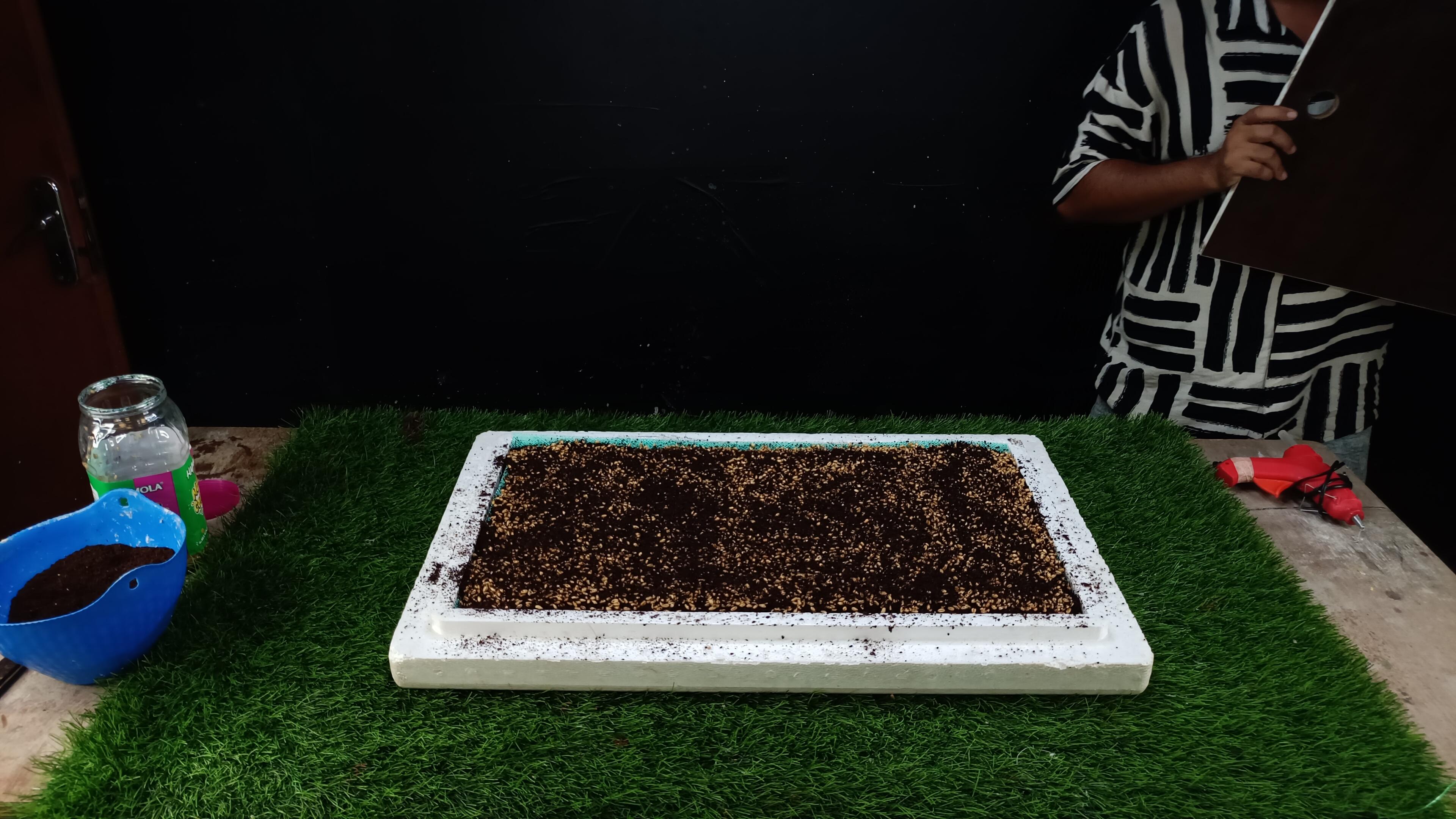
- Spread the cocopeat over the mosquito net.
- Cover the whole area specially the edges.
- Then, Moisten the cocopeat with water.
- Scatter the soaked wheat seeds evenly over the cocopeat.
- Add a thin layer of cocopeat over the seeds to blackout the seeds.
- Spray water evenly.
Cover the Entire Setup


- Cover the whole setup
- Place the whole thing in a warm, dark place to encourage sprouting.
- Keep the cocopeat moist but not soggy. Mist with water as needed.
Seeds Sprouting Into Seedlings


- And the seedlings develop their first true leaves in 10 days.
- Cut them out if they are too crowded.
Removing the Roots of Your Seedlings Carefully




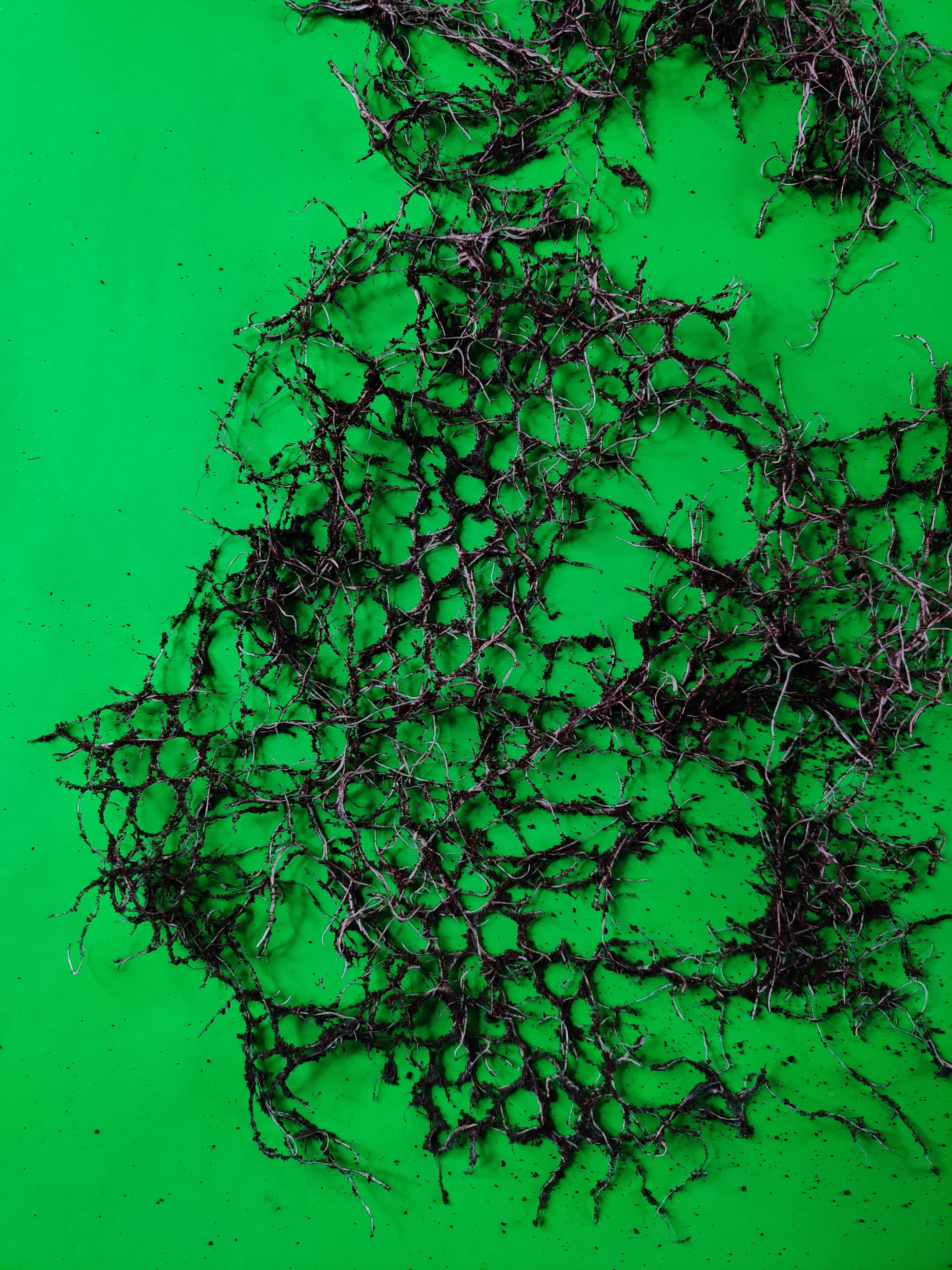
- Carefully lift the seedlings from the growing medium, supporting the base of the plant to avoid pulling on the stems or the roots.
- Use a knife to cut between the mosquito nets, this will separate the roots from the greens.
- Once the roots are separated you can use them for different purposes.
The demonstration successfully showcased the potential of wheatgrass roots as a novel textile material. By utilizing bubblewraps to mold and texture the roots, we achieved a unique fabric with promising aesthetic and functional qualities. As we look to the future, the application of this root textile in various products such as apparel, lamp shades, and home decor represents an exciting step towards sustainable and creative material design. Continued exploration and refinement of this technique could lead to broader adoption and innovation in the field of eco-friendly textiles.